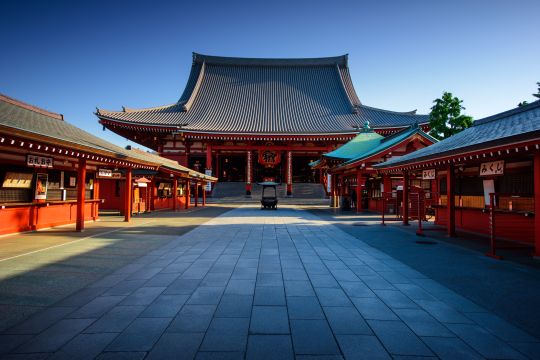|
Tokyo |
 Tokyo is a marvelous mix of modern living and old-fashioned manners, slick high-tech gadgets and cutesy cartoon mascots. It's terribly crowded, yet can be strangely quiet. It's home to the understated, and the wacky, and you often find them right next to each other on the sidewalk. That's the beauty of this not-so-pretty city — that, and the fabulous food and unparalleled mass transit system. There are shrines and stone lanterns and other traces of old Japan scattered among the skyscrapers, swanky shopping malls and hole-in-the-wall noodle shops. Tokyo is Japan's capital and the world's most populous metropolis. It is also one of Japan's 47 prefectures, consisting of 23 central city wards and multiple cities, towns and villages west of the city center. The Izu and Ogasawara Islands are also part of Tokyo.  Prior to 1868, Tokyo was known as Edo. A small castle town in the 16th century, Edo became Japan's political center in 1603 when Tokugawa Ieyasu established his feudal government there. A few decades later, Edo had grown into one of the world's most populous cities. With the Meiji Restoration of 1868, the emperor and capital moved from Kyoto to Edo, which was renamed Tokyo ("Eastern Capital"). Large parts of Tokyo were destroyed in the Great Kanto Earthquake of 1923 and in the air raids of 1945. Today, Tokyo offers a seemingly unlimited choice of shopping, entertainment, culture and dining to its visitors. The city's history can be appreciated in districts such as Asakusa, and in many excellent museums, historic temples and gardens. Contrary to common perception, Tokyo also offers a number of attractive green spaces in the city center and within relatively short train rides at its outskirts.  |
 For many, the 2003 film Lost in Translation by Sophia Coppola was the first chance to see beyond Tokyo's historic temples and sushi to the modern, pulsating metropolis that it is today. But don't think that the temples and sushi stands have gone away. This is a city of old and new, where opposites attract and new trends come and go like the tide, but history and tradition continue to be held in utmost respect.  The city is also the center of design and cutting-edge fashion. One step into the hip neighborhoods of Harajuku and Shibuya and you'll know what we mean. Dining is also a study in contrasts. People can dine at a Michelin-starred restaurant one night, and then belly up to the counter at the local ramen joint the next. And the people are as varied as their city. Residents of Aoyama may wear European fashion and drive fancy imports but those residing in Asakusa prefer to be decidedly less flashy. Stop in a bar in Ginza and one might find groups of salarymen, flush with large (though not as hefty in decades past) expense accounts, entertaining clients, but down the Hibiya Line in Ebisu many of the cheap watering holes are filled with young office professionals.  Even the landscape is varied. The city hosts some of the most unsightly sprawls of concrete housing—extending for miles in all directions—in the world. But it's also home to some pretty tall buildings. In Roppongi, you'll find the city's tallest building, Tokyo Midtown (248 meters [814 feet]), and the 634-meter (2,080-foot) Tokyo Sky Tree transmission tower is now taking shape near the Sumida River (set for completion in 2012). Whether you're gazing at the glow of Tokyo's evening lights or the green expanse of its parks or a plate of the freshest sushi imaginable or dramatically dressed people, this is a city of astonishing and intriguing beauty. If you're a foodie, artist, design lover, or cultural adventurer, then Tokyo, a city of inspiration and ideas, is for you. |
|
Kyoto | Geishas | Kimono | Ryokan (Japanese Inn) | Ikebana | Bonsai | Tea Ceremony | Cuisine | Shopping | Books & Movies |





